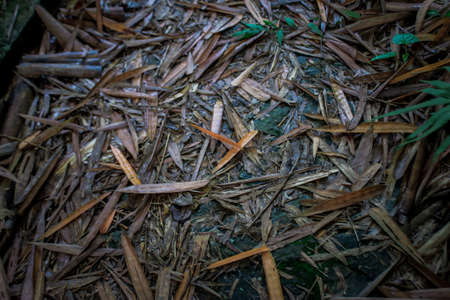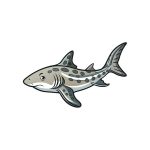1. Understanding Camouflage in Fishing
When most people think of camouflage, they usually picture military uniforms or hunting gear. But in the world of fishing—especially in the U.S.—camouflage clothing has carved out its own niche among anglers who want every possible advantage on the water. The idea is simple: fish can see you, and if they spot something unusual near the water’s edge, they might spook and swim away. That’s where camo comes in.
Camouflage clothing helps reduce your visibility to fish by blending your outline into the natural surroundings. Whether you’re standing along a wooded riverbank or wading through a grassy marsh, wearing patterns that match the environment helps you stay undetected. This can be particularly important when fishing in clear water or targeting skittish species like trout or bass.
The Science Behind Fish Vision
Fish don’t see exactly like humans do, but many species can detect movement, light changes, and color contrasts. In shallow waters with good clarity, your silhouette might stand out starkly against the sky or landscape behind you. By wearing camouflage, you break up that silhouette and reduce sudden movements that catch a fish’s eye.
How Camouflage Helps You Stay Hidden
| Environment | Recommended Camo Pattern | Why It Works |
|---|---|---|
| Wooded Shorelines | Forest or Leafy Patterns | Mimics trees and foliage for better blending while casting from land. |
| Grassy Marshes | Reed or Grass Patterns | Matches tall grass and reeds common in wetland areas. |
| Open Water / Boats | Blue-Grey Digital Camo | Cuts glare and blends with sky reflections on the water surface. |
| Rocky Riversides | Boulder or Earth-Tone Patterns | Camo matches stone and dirt tones to prevent contrast. |
A Part of American Outdoor Culture
The use of camouflage in fishing ties deeply into American outdoor sporting traditions. From duck hunters to bass anglers, blending into nature is seen as part of respecting the environment and maximizing success. Many American anglers wear camo not just for function but also as part of their identity—a signal that they take their sport seriously and respect wildlife behavior.
This cultural connection is especially strong in rural regions, where outdoor sports are passed down through generations. In these communities, camo isnt just about hiding—its about heritage, tradition, and being part of something bigger than yourself.
2. When Camouflage Clothing Makes a Difference
Camouflage clothing isn’t just for hunters—it can also be a game-changer for anglers in certain fishing situations. While not every fishing trip calls for full camo, there are specific conditions where blending into the environment helps you get closer to fish without spooking them. Let’s break down when and why camo really matters.
Fly Fishing in Clear, Shallow Waters
When fly fishing in clear creeks or shallow rivers, especially during sunny days, visibility is high—for both you and the fish. Trout and other species in these environments are easily startled by movement, shadows, or unnatural colors. Wearing camouflage or earth-toned clothing helps you stay less noticeable while casting from the bank or wading through the water.
Why It Helps:
- Reduces visual detection from fish
- Makes your movements less alarming
- Helps you get closer to feeding spots
Bank Fishing in Wooded Areas
If youre casting from shorelines surrounded by trees, brush, or tall grass, wearing camo that matches your surroundings can keep you concealed from fish near the bank. Bass and panfish often hang out close to structure along the shoreline. Sudden movements or bright clothing can scare them off before you even get your bait in the water.
Best Camouflage Patterns:
| Fishing Environment | Recommended Camo Pattern |
|---|---|
| Wooded Lakeshore | Forest or Woodland Camo |
| Sandy Riverbanks | Desert or Tan-Based Camo |
| Grassy Marshes | Reed or Grassland Camo |
Sight Fishing in Calm Conditions
Sight fishing requires stealth and patience. Whether youre targeting redfish on the flats or carp in a still pond, calm weather means fewer ripples and higher visibility. In these moments, fish can spot unnatural movement quickly. Wearing muted tones like greens, browns, and grays—or full-on camo—can give you an edge.
Pro Tip:
Pair camo clothing with polarized sunglasses to reduce glare on the water and improve your ability to spot fish before they spot you.
When Not to Worry About Camo
If youre fishing deep waters from a boat or during low-light hours (like dawn or dusk), camouflage matters less. In these scenarios, sound and vibration tend to spook fish more than sight. However, it never hurts to avoid flashy colors that might reflect sunlight and create unwanted attention underwater.
Knowing when to wear camouflage while fishing comes down to understanding how visible you are in different environments. When fish can see you clearly—especially in shallow, calm waters—camo can help you stay under the radar and improve your chances of landing more bites.

3. Choosing the Right Camouflage Patterns
When it comes to fishing, wearing the right camouflage clothing can make a real difference—especially in clear water or highly pressured areas where fish are easily spooked. But not all camo is created equal. The key is choosing patterns that blend in with your specific fishing environment. Heres how to pick the best camo for different locations.
Understanding Your Fishing Environment
Before selecting a camo pattern, think about where you’ll be fishing. Are you standing on a rocky shoreline? Wading through a forested stream? Casting from a boat on a calm lake? Each of these environments has unique color palettes and textures, and your camo should match accordingly.
Common Fishing Environments and Matching Camo Patterns
| Environment | Best Camo Pattern | Why It Works |
|---|---|---|
| Freshwater Lakes (wooded shorelines) | Forest or Woodland Camo | Mimics tree cover and brush near the shore; great for bank fishing or casting near submerged logs. |
| Rocky Streams & Rivers | Stone or Digital Grey Camo | Blends with boulders, pebbles, and shaded riverbanks; ideal for stealthy wading. |
| Coastal Shorelines (sandy or grassy) | Marsh or Sand Camo | Matches light-colored sand, sea grass, and driftwood; perfect for surfcasting or flats fishing. |
| Muddy Banks & Swamps | Mossy Oak or Bottomland Camo | Covers darker tones of mud, reeds, and marsh grasses; helps you stay hidden in murky zones. |
| Open Water (on boats) | Blue Water or Oceanic Camo | Breaks up your silhouette against the sky and water surface; useful offshore or deep-sea fishing. |
Tips for Selecting Camo That Works
Match the Season Too
The same location can look totally different in spring versus fall. Opt for lighter greens and browns in spring and summer, then shift to deeper browns and grays during fall and winter.
Avoid High-Contrast Clothing
No matter where you fish, bright colors or stark contrasts can alert fish—especially in shallow or crystal-clear water. Stick with muted tones that dont stand out.
Consider Movement
Even the best camo wont help if youre moving around too much. Slow, deliberate movements combined with well-chosen camouflage make you virtually invisible to fish near the surface.
The Takeaway on Picking Fishing Camo Patterns
Selecting the right camouflage for your fishing trip isn’t just about looking cool—it’s about blending into your surroundings so fish don’t spot you before you cast. Whether youre knee-deep in a woodland creek or standing on a sunlit beach, choosing camo that fits your environment gives you an edge when it counts most.
4. Camouflage vs. Traditional Fishing Apparel
When it comes to fishing apparel, anglers often face a choice between camouflage clothing and more traditional options like high-visibility or neutral-colored gear. Each type has its own set of benefits and drawbacks depending on your fishing environment, target species, and personal safety preferences. Let’s break it down so you can decide what works best for your next trip.
Performance on the Water
Camouflage clothing is designed to help you blend into your surroundings—whether youre standing in reeds, sitting by a rocky shore, or wading through clear water. This can be especially helpful when targeting fish that are easily spooked by movement or unnatural colors.
On the other hand, traditional fishing gear often comes in neutral tones like khaki or gray, or even bright colors like orange or neon green. These colors don’t offer the same level of concealment but may be more breathable or lightweight for long days on the water.
Comparison Table: Performance Factors
| Feature | Camouflage Clothing | Traditional Fishing Gear |
|---|---|---|
| Stealth & Concealment | High – blends with natural surroundings | Low – stands out in most environments |
| Breathability & Comfort | Varies – depends on material | Often high – many lightweight options |
| Durability | Good – often made for rugged use | Good – available in a range of materials |
Safety Considerations
While camouflage helps you stay hidden from fish, it can also make you less visible to other people—especially boaters or fellow anglers. This could pose a safety risk if youre fishing in busy areas, low light conditions, or rough weather.
High-visibility clothing is easier to spot from a distance, which is why its often recommended for offshore fishing or areas with heavy boat traffic. Neutral tones fall somewhere in between—they don’t offer stealth like camo but aren’t as attention-grabbing as neon colors either.
Comparison Table: Safety Factors
| Feature | Camouflage Clothing | Traditional Fishing Gear (Neutral/High-Vis) |
|---|---|---|
| Visibility to Others | Low – may blend into background too well | Medium to High – easier to see in most environments |
| Safety in Low Light | Poor – harder to spot at dawn/dusk | Better – especially with reflective accents |
| Risk of Spooking Fish | Lower – helps avoid detection | Higher – brighter colors can alert fish |
Choosing What’s Right for You
If you’re fishing in clear freshwater lakes where fish are sensitive to movement and color, camouflage may give you the edge. But if youre out deep-sea fishing or casting from a crowded pier, traditional gear with higher visibility might be the safer bet. Think about your specific environment and goals before picking your outfit—it’s not just about looking good; it’s about fishing smart.
5. Camouflage Culture in American Outdoor Life
In the United States, camouflage isnt just for military use—its a major part of outdoor culture, especially in fishing and hunting communities. Over the years, camo patterns have become more than functional gear; they’re a symbol of lifestyle, tradition, and even personal identity. Whether youre casting a line on a quiet lake or heading into the woods during deer season, wearing camo often says, “Im part of this outdoor way of life.”
Why Camouflage Became Popular in Fishing
Originally designed for concealment during hunting, camouflage clothing made its way into fishing gear as anglers realized it could help them blend into natural surroundings. Especially for freshwater fishing in clear lakes and rivers, where fish can be easily spooked by movement or shadows, camo helps reduce visibility and disturbance.
Functional Benefits vs. Cultural Appeal
| Aspect | Functional Benefit | Cultural Appeal |
|---|---|---|
| Visual Concealment | Blends with environment to avoid startling fish | Represents an experienced, serious angler |
| Material Design | Lightweight, breathable fabrics suitable for long hours outdoors | Popular camo brands associated with outdoor lifestyle |
| Pattern Variety | Specific patterns match different terrains (marsh, forest, open water) | Allows personal style expression within outdoor traditions |
The Role of Brands and Media
A big reason camo has stayed relevant is because of its strong presence in branding and media. Companies like Mossy Oak, Realtree, and Under Armour have made camouflage synonymous with rugged outdoor living. TV shows, social media influencers, and YouTube channels that focus on fishing and hunting often showcase camo gear, reinforcing its popularity among both seasoned outdoorsmen and newcomers.
Lifestyle Branding Meets Practical Gear
Camo clothing is no longer just about staying hidden—its also about looking the part. Whether someone is actually out fishing or just grabbing groceries in town, sporting a camo hat or hoodie signals their connection to the outdoors. It’s part fashion statement, part cultural badge.
A Symbol Beyond Utility
In American outdoor life, camouflage has evolved beyond its original purpose. For many anglers and hunters, it represents heritage—something passed down through generations. It tells a story: of early mornings on the water, family traditions, respect for nature, and a commitment to the sport. So when someone wears camo while fishing, it’s not just about catching more fish—it’s about belonging to something bigger.


